
Want to learn more? This book on the Birds of Prey of North America is a fantastic read!
Ohio is home to a large number of birds of prey, 21 different species reside in the state. There is a group called the Ohio Falconry Association that studies the relationship between these birds and human activity in the state by training people to become falconries. They also help survey the number and distribution of falcons.
Ohio has a continental climate with a lot of humid weather. There are hot summers and cold winters in Ohio, however the extreme south of the state has a different climate and is subtropical.
In Ohio, there are 83 different state parks and 3 National Wildlife Refuges. There are lots of bird watching spots in Ohio that are popular for enthusiasts. A prime spot for seeing falcons is Magee Marsh Wildlife Area.
Now that we’ve had a look at what types of falcons can be found in Ohio, let’s look at these falcons in more detail and have a see at where you might find them in the state.
Want to attract birds of prey to your yard? Take a look at our article!
What Falcons can be seen in Ohio?
Table of Contents
1. American Kestrel

Wingspan
51-61cm
Weight
80-165kg
Life Expectancy
11 Years
Diet
Insects, some small rodents / birds
With a slate-blue head, a white neck and rusty wings, the American Kestrel is the smallest falcon to be found in North America. These birds are very territorial and will nest in dense trees during the mating season.
They will fight other birds of their species that try to approach their nests. As a warning to other birds, the male kestrel will make a variety of swooping dives around its nest to show that it is claimed territory.
Outside of mating season, these tiny falcons are happy to spend most of their time closer to the cities and have started moving into more urban areas.
The breeding population patterns of American Kestrels have been well studied in Ohio.
It has been found that the densest population of these birds is in the Lake Plain region whilst they are much less in common in the glacial plateau regions. They are more likely to be found to the north and the eastern areas of the states.
Your best chance of seeing one of these birds is during their mating season. This season is in the spring and starts in the month of march and can last up until August.
They are much more active during this season, increasing their amount of hunting and aerial displays. You should also try to watch for these birds in the middle of the day as this is when they mainly hunt for prey.
2. Merlin
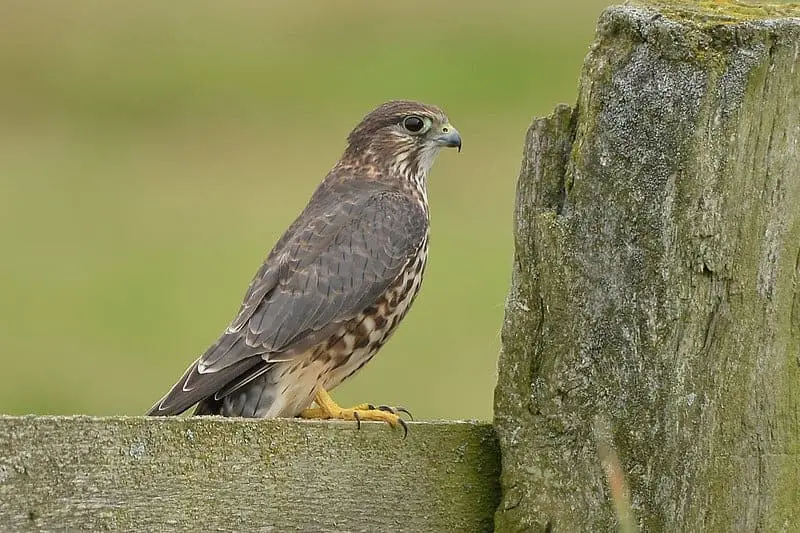
Wingspan
58-63cm
Weight
160-240g
Life Expectancy
Up to 10 years
Diet
Small birds
Merlins are found in open grasslands across North America. They are small falcons with dark streaky feather patterns across its body. These birds do not make their own nests, instead they find nests that have already been built and abandoned by other birds, such as crows.
Merlins only mate with one other bird in the breeding season but this bird may differ from year to year as they do not mate for life. In recent years they have started nesting closer to more urban areas.
Whilst these birds are uncommon in Ohio, it is still possible to see them. They will be found in the open grasslands but have also been seen in Ohio cemeteries, the gravestones act as small perches for the birds across the open fields.
The best time to try and see these birds in Ohio is during the spring and fall migrations. During the winter, these birds will migrate further south to deal with the colder months so they will be very rare to spot in Ohio.
During the spring is going to be your best chance as this is when they will return to the state and begin their breeding season.
3. Gyrfalcon
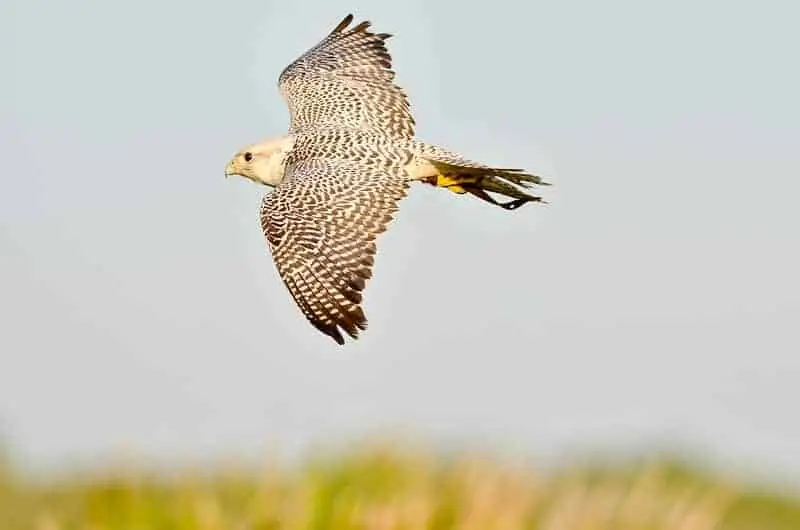
Wingspan
123cm
Weight
800-2100g
Life Expectancy
Up to 14 years
Diet
Mostly small birds
The Gyrfalcon is larger than the other falcons we have discussed. They are covered in striking grey feathers and the females tend to be much bigger than the males.
Where available, these birds will build their nests on cliffsides, the higher the better with them reaching nesting heights of 5000ft.
Gyrfalcons are monogamous and mate for life, breeding pairs will often spend the whole year together rather than just the breeding season.
They are territorial and will defend their territory from other birds through a series of warning calls.
You are most likely to see one of these birds on cliff edges near large bodies of water.
As tundra animals, they are more common in places such as Canada but have been noted to stay in the north of Ohio. They rarely venture further south than this.
Gyrfalcons migrate south during the winter to deal with the colder months and this is when they are most likely to be present in Ohio.
Winter is your best time to go bird watching in Ohio, particularly from the months of October to February.
4. Peregrine Falcon
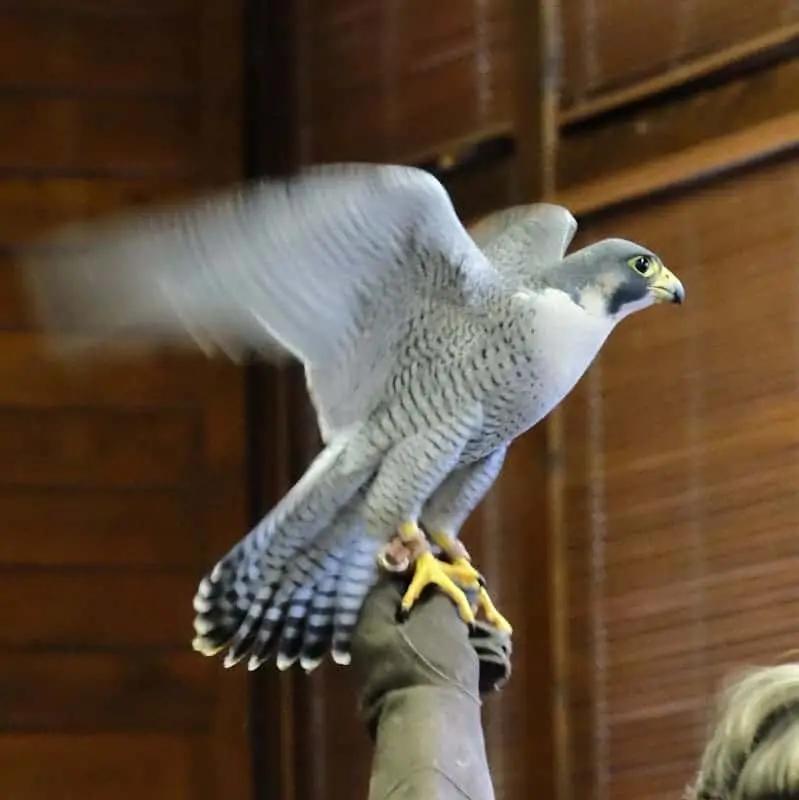
Wingspan
1m
Weight
500-1600g
Life Expectancy
17 Years
Diet
Mostly birds
Peregrine falcons are one of the largest and most widely distributed falcons across the world. Their back is covered in dark feathers whilst their bellies are bright white.
They are known as the fastest birds in the world, when they dive to catch their prey, they can reach impressive speeds of up to 200mph.
As the breeding season starts, males will spend their time making nests at various locations so that when the female comes along, they may choose from the nests available to raise their eggs.
There are about 40 different recorded nests of Peregrine Falcons in the state. Ohio has released a lot of these birds in recent years to try to help the population and it has been successful.
There are some good natural areas for watching Peregrine Falcons. Two of the most popular amongst bird watchers are Cuyahoga National Park and also Lake Metroparks in Lake County.
Peregrine falcons are much more active during their breeding season and this is your best chance to try and see one. The breeding season is primarily in the spring, it starts in February and can last to as late as July.
The peak months for activity during the breeding season are in March and May, this is your best chance to take a drive to the national parks and hopefully you will spot a breeding pair.
5. Prairie Falcons
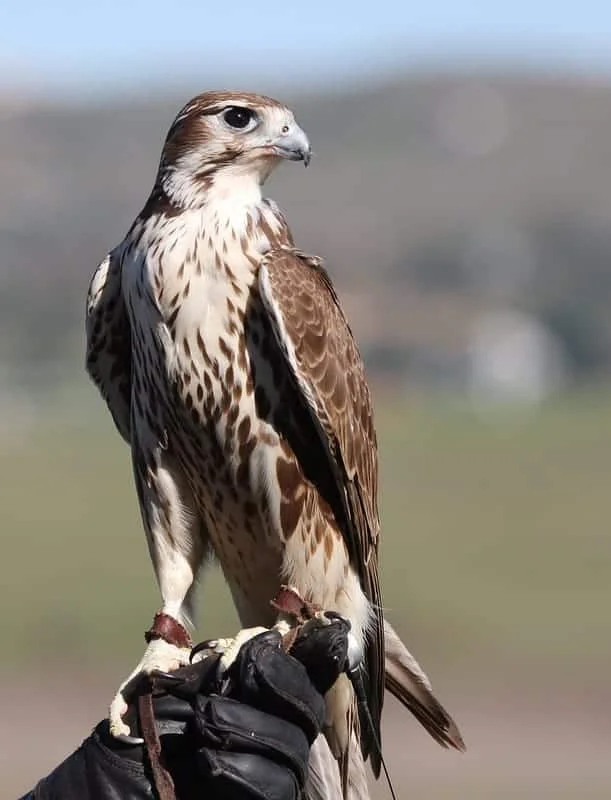
Wingspan
90-113cm
Weight
420-1100g
Life Expectancy
17 years
Diet
Small mammals
Deep brown feathers cover the Prairie Falcon, it is a medium sized falcon that is most commonly seen flying over open grasslands. Their courtship begins by a series of calls that are done by both the male and female, usually back and forth in concession.
Before breeding, the male will take the female to a variety of locations for possible nesting sites. They will visit these sites together before deciding on a final spot to build their nest and raise their eggs.
As the name suggests, these falcons are most commonly found in prairie lands. A great pace for spotting these birds in Ohio is in The Wilds.
You are not able to leave the roadway as you pass through The Wilds, but because it is such vast open space you have a very good chance of spotting one of these birds soaring above your car.
During the winter these birds migrate south to deal with the colder months. This is when they will usually leave Ohio, meaning that the best time to try and see a Prairie Falcon is in the spring months.
They will start returning to Ohio around March and soon after the breeding season will begin, meaning these birds will be much more active and it will increase your chances of spotting one.

More Articles.
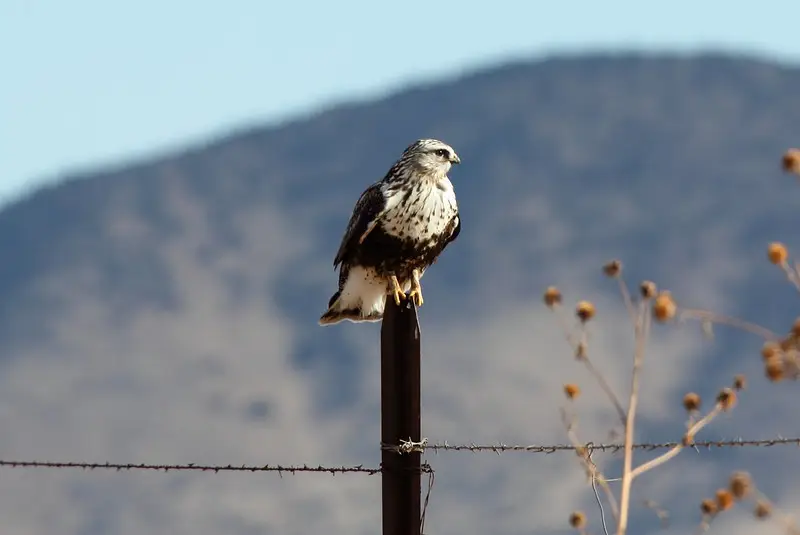
What Hawks can you see in the Netherlands? (3 Species with Pictures & Sounds)
What Hawks can you see in Netherlands? There are 3 different species of Hawks that
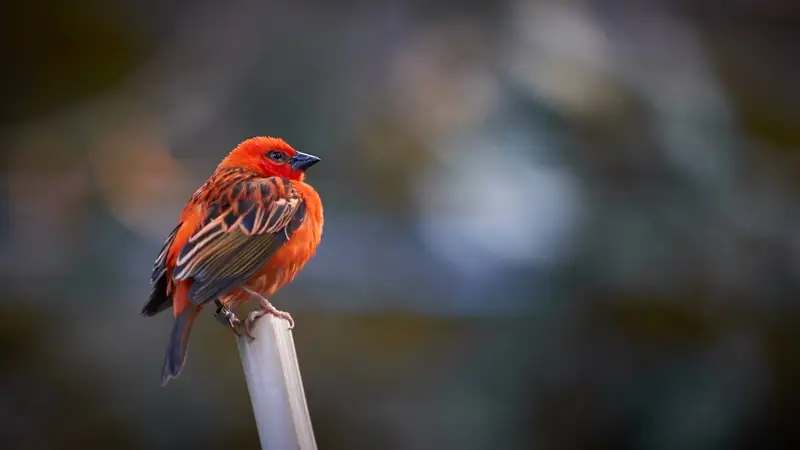
How to Attract Finches to Your Yard?
Despite their tiny size, finches are one of the most recognisable birds across the whole
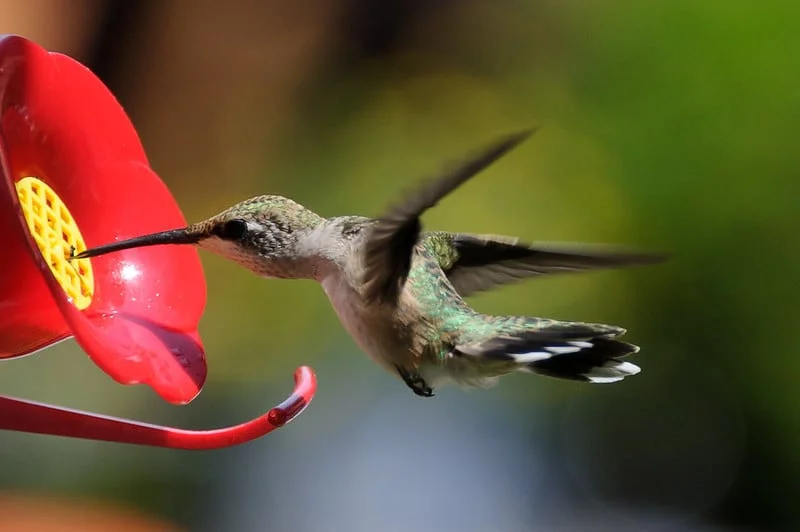
What time of day should you feed hummingbirds?
Hummingbirds are most known to prefer to visit a feeder and flowers as the sun

About Us
We are avid bird-watchers who recently retired, allowing us more time to travel the world. Fortunately, we have managed to visit numerous countries around Europe, Asia, and America. Watching and photographing birds has been a passion for many years and we are making the most of the extra time on our hands!
